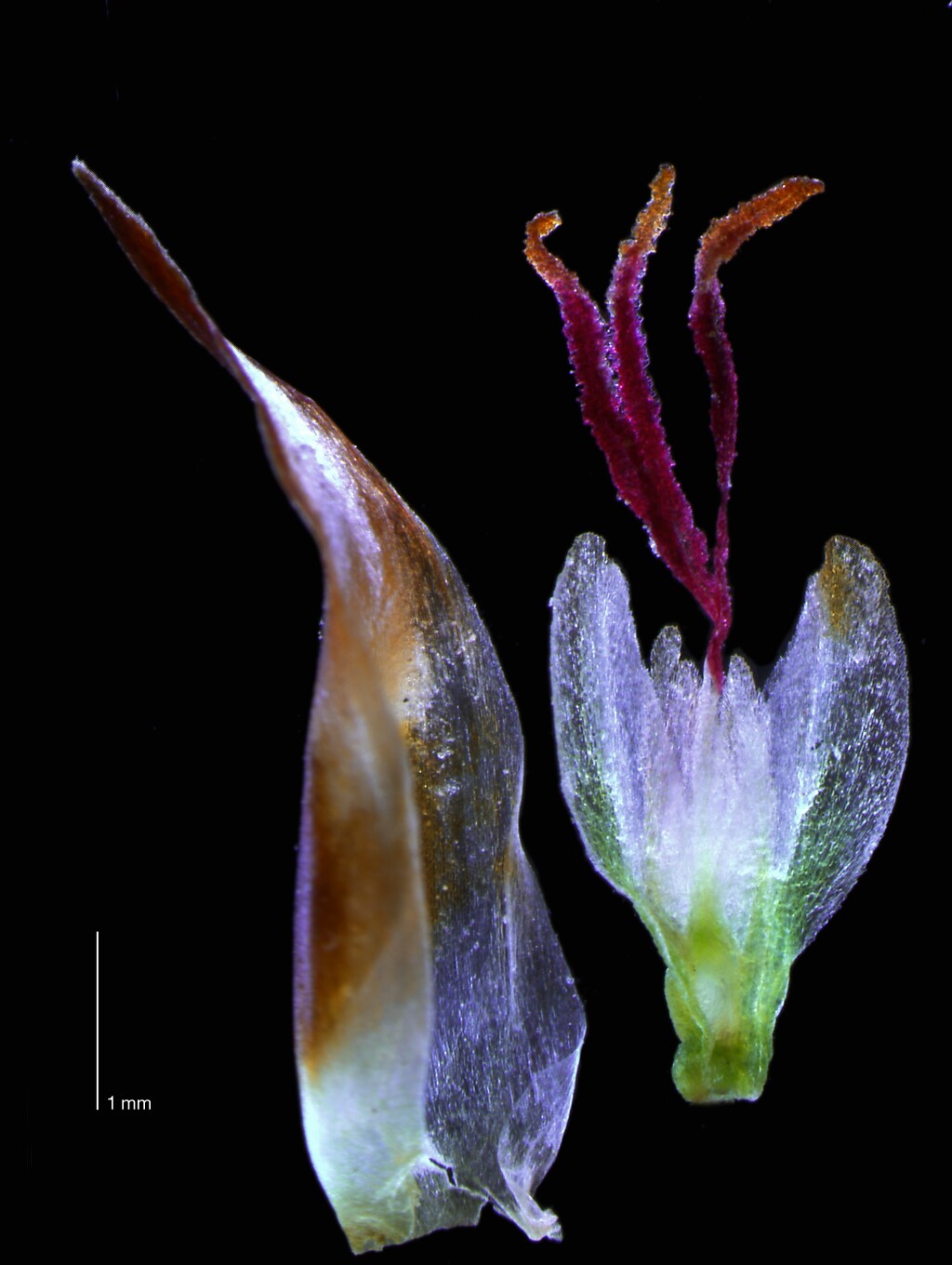Leptocarpus
Perennial, dioecious herbs. Rhizome hard, creeping or tufted. Stems ± erect, subterete or terete, greenish, branched or unbranched. Leaves reduced to persistent sheathing bracts. Male and female inflorescences dissimilar. Male spikelets many-flowered, spikelets arranged in a branched inflorescence. Female spikelets simple, 1–many-flowered. Floral bracts imbricate, glume-like, several, dark brown, with membranous margin. Perianth (4–)5–6, unequal, the 2 outer slightly longer and keeled. Female flowers with 3 small staminodes or staminodes absent; ovary unilocular; style with (2–)3 branches. Fruit a small ovoid nut.
About 16species occurring in Australia, 1 in Victoria.
The classification of Leptocarpus has recently changed to include Meeboldina Suessenguth and Stenotalis B.G.Briggs & L.A.S.Johnson (Briggs 2014).
Conn, B.J. (1994). Restionaceae. In: Walsh, N.G.; Entwisle, T.J., Flora of Victoria Vol. 2, Ferns and Allied Plants, Conifers and Monocotyledons, pp. 179–190. Inkata Press, Melbourne.
 Spinning
SpinningBriggs, B.G. (2014). Leptocarpus (Restionaceae) enlarged to include Meeboldina and Stenotalis, with new Western Australian species and subgenera. . Telopea 16: 19–41.



